Think about this:
A little unknown insurance company:
- Lacking any typical insurance rating (AB Best etc) or bona fides;
- Operating with a tiny (compared to established industry behemoths) marketing budget;
- With no active agent network; and
- Not any kind of established track record at all
This scrappy startup went from 0 to over $100 million in annual insurance premiums in 24 months. To date they have won over 800,000 customers.
The company, of course, is Lemonade (NYSE: LMND). Eyebrow raising success? Yes. Disruption? Absolutely, but it’s subtle.
Let’s unpack that:
Lemonade is a homeowner insurance company that its principals built from the ground up. Think about that for a second. Oh, the regulatory hurdles, cash reserves requirements, complex underwriting…the list goes on. Still, Lemonade raised over $300 million prior to its Initial Public Offering.
And viola, in 24 months, snatched over $100 million in insurance premiums from big insurance companies. Big…Insurance…Companies. Companies like State Farm, Allstate, and Farmers that write over a half TRILLION in property and casualty premiums per year.
How on earth did they do that?
The short answer is, by designing a very pleasant user experience (UX). Lemonade is living proof that a mediocre design is now a vulnerability.
So we tested all the big insurance company website buying processes. Are they bad?
No, most of them are OK. But only OK. The big take-away is this:
Unlike many of its competitors, Lemonade is absolutely crystal clear on its objective. It’s designed to make people comfortable buying insurance – right in the user interface – without human interaction. From a user design perspective, it’s a thing of beauty.
Why are we talking about this?
Listening to a roundtable discussion about app development an engineer chimed in and said: “Simplification [abstraction] is a mistake. Dumbing down your application for stupid people introduces un-necessary layers of complexity.”
This is it. This is the front line of the battle right there. You have brilliant engineers who think a certain way and refuse to understand how the other 80% of the world thinks. Admittedly, this engineer was talking about the back end code. Not the front end user interface. But if you think they don’t bleed into one another you are mistaken. The iPhone is a runaway success because Steve Jobs was tough enough to break through this nonsense. One year olds use that interface brilliantly. That’s how “stupid” it is.
Resistance really excellent user design (a.k.a dumbing things down) just lost State Farm about a half million customers to Lemonade.
Why This is a Turning Point
Whether it is consumer facing software or enterprise software, “dumbing down” the most important thing you can do. Why? It’s simple. Everyone is stretched too thin. We’ve all been there. Sitting in front of an app, spending time trying to figure out how to do something simple. It’s infuriating. We all just shave to assume that our user’s emotional and time availability is at or near zero.
Here Comes the Plug
For us there is no better frontier to bring great UX than integration and ETL. I can tell you it’s not an easy road. It’s a wildly complex area. Perfect? No. Insanely lengthy and heated debates about design? You bet. But that’s our promise. We are giving abstraction and UX our all. The rest? Well they are mostly for coders. Not much has been abstracted.
Tell Us How We Can Help You Learn More






